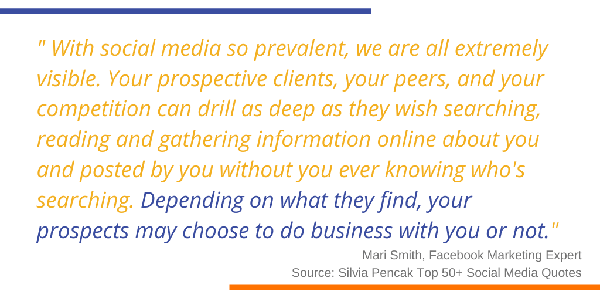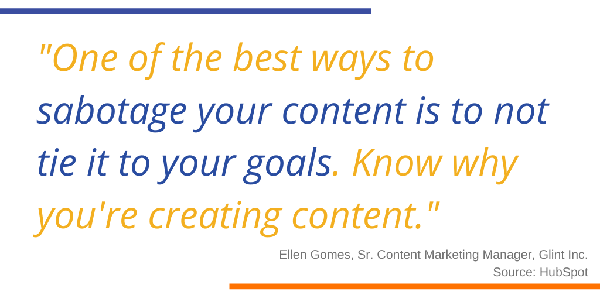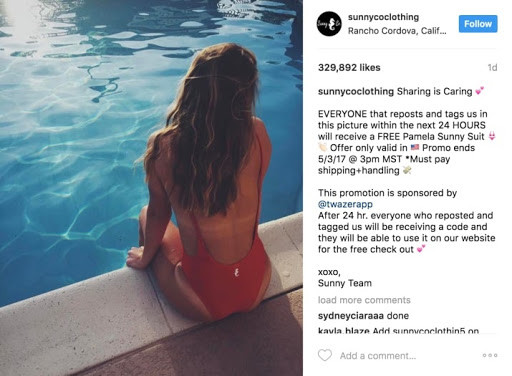How To Run A Social Media Campaign Step By Step | GaggleAMP
Social media - just do it they said. It’s easy they said. “They” are wrong. Very wrong.
In 2019 Smart Insights reported there were over 4.388 billion internet users worldwide with over 3.484 billion active on social media, up just over 9% from the prior year. This accounts for 45% of the global population being active on social media. Now with the average internet user spending 142 minutes per day on social networking and messaging platforms, can you imagine the saturation of your social media campaigns?
But social media is easy, remember?

Here’s the thing - it’s not easy to cut through the noise. But, if you understand how to run a social media campaign, you can certainly improve your chances of success. Follow these steps and you’ll be well on your way towards increasing the effectiveness of your social media advertising.
Set Your Social Media Campaign Goals

Source: HubSpot
Your social media campaigns will only be successful if you think through what your end goal is and what outcomes you are looking to achieve. Posts that do not support a goal add noise; posts that give gold provide value.
When you’re thinking through your social media campaign goals, strategy matters because it's how you judge success. These goals are usually directly tied to your business goals. Some common goals include:
- Drive traffic to your website or specific ad campaign
- Increase sales and leads
- Create long-term brand awareness
- Communicate in real-time with customers or potential customers
- Drive authority as a thought leader in your space
Establishing the goal helps to ensure you are running a successful social media campaign.
How to Set SMART Social Media Goals
You’ve likely heard that all goals should be specific, measurable, attainable, realistic, and time-bound. These are SMART goals, and they create a structure for posts you choose to share on social media.
To help you understand how a SMART goal helps you learn how to run a social media campaign, let’s take a look at a campaign gone wrong.

Source: @sunnycoclothing via Instagram/LSB.
Attempting to drive brand awareness to a product, retailer Sunny Co. Clothing wanted to promote their Baywatch-themed swimsuit, the Pamela, with a fairly simple social media post. Simply repost the tagged promotional picture and within 24 hours receive a code for a free $65 swimsuit. Easy right?
Their SMART goals may have looked like this:
Specific
Sunny Co. Clothing wants to increase brand awareness through its Baywatch-inspired swimsuit.
Measurable
It measures success by the number of people claiming the free swimsuit.
Attainable
Can the company realistically hit its goal through the use of tagged promotional pictures on Instagram?
Relevant
The business objective is to increase brand awareness towards a specific product using an iconic bathing suit inspiration.
Time Specific
The promotion was valid for 24 hours with only two parameters: the person must reside in the U.S. and pay shipping and handling.
By all standards, Sunny Co. Clothing set a business goal with this digital marketing campaign that was SMART and stood to drive potential customers and brand awareness. What they didn’t account for was viralness - what happens if this post takes off? And guess what, it did.
The campaign eventually needed to be capped after the fact due to the viral volume of the participants. Of course, that didn’t make fans exactly happy either, which then created poor brand sentiment, definitely something they did not set in their SMART goals.
Ultimately, set SMART goals but also be smart about it. Consider your failsafe - what happens if it's really successful? Yes, you hit your goal but could there be a tipping point where your campaign is too successful? Knowing the difference here really helps you with how to run a social media campaign that creates long-term brand awareness while tipping your hat to your target audience.
Do Your Competitive Research on Social Media
All marketers are familiar with competitive research but doing research on your competitors on social media is often a missed step. It helps you determine the type of content that is resonating with their audience, and thereby your audience. It also gives you a better sense of where they are focusing efforts, or even competitive differences.
Uncovering competitor strategies, pain points, and even hashtags used helps you get a leg up on what messaging they are creating and where you can capitalize. This research can be done manually or even with tools like SEMRush or Ahrefs, which help you learn why your competitors rank the way they do, and how to outrank them.
Choosing Your Audience
Once you have your SMART goals in place and a strategy, it’s time to choose your target audience. This may align with your potential customer personas or simply someone that would have an interest in what you have to offer. HubSpot recommends a few ways to appeal to their target audience on social media:
- Consider current trends
- Create really good visual content
- Engage with the audience
- Be informative
Enter fast food companies. They rule social media advertising.
Famously, Popeyes Louisiana Kitchen introduced a chicken sandwich to its menu that looked very much like another famous chicken sandwich - a Chick-fil-A sandwich. Capitalizing on an opportunity to push their own agenda, Popeyes shared a Chick-fil-A post, which ignited the internet (and other fast-food chains) in discussing their favorite chicken sandwiches.
This exchange resulted in a boost of followers and a boost in exposure - their new chicken sandwich was out of stock in just 15 days.
.png?width=368&name=unnamed%20(14).png)
Likewise, competitive research can help support how to run a social media campaign successfully, but also an offline campaign, too. A 2017 Wendy’s Super Bowl ad stemmed from an exchange gone rogue on social media. The ‘always fresh, never frozen’ brand took this exchange as an opportunity to highlight a big differentiator between Wendy’s and McDonald’s in a television advertisement.
By knowing the audience that Popeyes and Wendy’s were targeting, it helped them with how to run a social media campaign that was not only increasing their social media presence but hitting their exact target market.
How to Estimate Social Media Campaign Budgets
In order to calculate the return on your investments for social media advertising, you need to understand what metrics drive success. Many SMART goals measure success by way of tangible metrics like units sold, leads generated, or even the increase in vanity metrics like reach and engagements. Measurement towards these SMART goals helps to support larger company goals around sales growth, brand awareness, and long-term engagement with potential customers.
Budgets dedicated to these social media campaigns also vary depending on what you are trying to achieve, but there are some benchmarks you can compare against.
- Of the digital marketing budget, about 15% to 25% usually gets spent on social media marketing efforts (both organic and paid) says WebStrategies.
- If you are looking to build a community, you should determine the cost per follower. If you are looking to increase website traffic, you should look at your cost per click and target number of visits to back into the budget needed says That Agency.
- An analysis by The Content Factory says the average social media budget settles between $200 and $350 per day with monthly costs between $4,000 and $7,000.
There are organic ways to pack a punch when you’re determining how to run a social media campaign, too. For instance, these paid opportunities can be compounded, or offset, when you are trying to do more for less with an employee advocacy platform. These campaign budgets are driven by paid efforts, placing yourself into a conversation or search. A well-rounded employer branding strategy should also look at organic to offset the higher costs of paid while amplifying your most engaged audiences via employee advocacy tools.
Using Social Listening Tools
Social media makes it easier for us to get in front of potential customers and gain real-time feedback on products and services. It’s also created a lot of noise to shuffle through, which is where social listening tools come in handy.
What Can Social Media Listening Tools Monitor?
In short, social media listening tools can pull in just about anything you want to monitor on social media, but here are a few popular use cases.
- Brand Mentions - who is talking about your brand and not tagging you? What is the overall sentiment?
- Hashtags - track your event, industry, or competitor hashtags to see what others are saying.
- Product Improvements or Changes - you can learn a lot from what your audience posts in the comments to your own posts.
A great example of a product improvement or changes would be with the Oreo brand.
.png?width=512&name=unnamed%20(15).png)
They leverage their own Instagram handle not only to promote new flavors and products, but to learn what their audience wants to try in an Oreo.
What Tools Can I Use for Social Listening?
There are many social listening tools out there that can help you with monitoring your brand. One of our favorites, TweetDeck, is a free offering that monitors conversations on Twitter.
GaggleAMP has theirs set up to monitor brand activity, mentions, and even use of the keyword ‘employee advocacy.’ Setting up searches within their interface helps elevate relevant tweets, capture responses, and listen to conversations from afar. And, depending on what we learn here, it can help us with how to run a social media campaign on Twitter, tailoring our posts around the needs discussed.
How Do I Run a Successful Media Campaign?
There are many tips out there when learning how to run a successful media campaign. It can be difficult to implement them all but there are some that are proven to set you apart from the competition. Here are some best practices to keep in mind.
Optimize Campaign Scheduling and Publishing Times
Knowing when to post your content can help you understand how to launch a successful social media campaign. Leveraging a social media content template can visually make it easier to see what is posted when. This gives the entire team visibility into opportunities for discussion online and allows you to plan strategically.
This also helps you identify which posts are most effective on which channels and at what time. Here are a few things you want to keep in mind when choosing when to publish.
- Time zone - Emails scheduled for 8 am EST that are not optimized for time zone also hit at 5 am PST and 1 pm in London. If you are intending for your audience to see this email first thing in the morning, you may achieve that with a U.S. based audience, but not others.
- Platforms - Success on each platform varies, as does usage. For example, a B2B organization may be more successful with posts created during work hours on a network like LinkedIn. eCommerce may have a bigger uptick on Facebook and Instagram on holidays and weekends.
- Leverage a social media engagement tool - Tools like Buffer and GaggleAMP can help you not only intentionally plan your posts but also harness the help of other advocates within your company. Buffer is a social media management platform that can help you automate your brand’s social media posts. Similar to Buffer, GaggleAMP is an employee advocacy tool that helps you automate curated posts to your employees or brand advocates to share on their social channels.
There is no one size fits all solution to the best times to publish either but your Google Analytics data can point you in the right direction.
Types of Campaigns to Try on Social Media
When it comes down to it, there are endless ideas of how to run campaigns on social media. And there is no clear-cut formula for brands on which campaigns work best. The best way to figure out what type of social media campaign will work best for you is to try them out. Here are a few ideas:
- Event-based Campaigns
- Partnerships with Vendors or Influencers
- Contests and Giveaways
- Community Donations (time, money, and/or effort)
- HR Recruiting Campaigns
- User-Generated Content Campaigns
- Polls on Twitter or Facebook
- Employee Advocacy Campaigns
- Campaigns Around Customer Support
Any of these campaigns have the potential to be powerful with the right messaging. Here are a few things to consider when crafting a campaign on social media.
Human-centered Design and Messaging
By definition, human-centered design is a creative approach to problem-solving. “It’s a process that starts with the people you’re designing for and ends with new solutions that are tailor-made to suit their needs,” says Ideo, a non-profit design studio. Effective design with compelling messaging drives leads and sales because it solves a problem.
.png?width=512&name=unnamed%20(12).png)
Source: theautobrush Instagram
The AutoBrush tackles both. Parents have frustration with their kids and their child’s ability to not do it right (or at all). Kids have frustration with the entire tooth-brushing process. Traditional toothbrushes are not fun for kids, hence why they have kid-friendly designs to try to make it fun. AutoBrush takes it to the next level by making fun for kids to brush. And it’s improving their child’s brushing habits, which solves a problem for the parents (and their child’s dentist).
Unique Content vs. Curated Content
To get clear on the difference, unique content is original content you create to share with your audience whereas curated content is existing content you find compelling to share with your audience. It’s important that you do both when running a successful social media campaign.
Content creation is great because it puts your spin on the content. You control the voice and branding, you’re set apart as a thought leader, and it drives traffic and purchases when done right. But, it can be massively time-consuming and expensive.
In contrast, content curation helps save time and builds relationships, not only with the person or company that created the original content but also via tags on social channels. The downside though is that you no longer control the narrative, meaning you lose out on traffic to your site, it’s less trustworthy, and it’s still time-consuming to find good content.
Amplifying Results with Influencers and Micro-Influencers
Content can be well-rooted in keywords and play to all the SERPs but adding a human touch to your content amplifies results. This is why there has been such a rise in influencers, employee advocacy tools, and brand advocacy through stakeholders. You've heard of influencer marketing, but think of your employees as micro-influencers in your industry. These all can help boost engagement and exposure, amplifying the effectiveness of a campaign.
.png?width=461&name=unnamed%20(11).png)
Carbon Black, a large cybersecurity company, often has executives that appear in interviews with major media outlets. Knowing they have the outlet ripe with interest, Carbon Black leverages an employee advocacy platform to bring attention to their brand's social media post. This does two things: creates additional engagement on the post, helping to amplify their results via employee advocacy, and it gains greater visibility to the media outlet, which recognizes that having a Carbon Black executive in an interview yields better social media results.
Campaign Landing Pages
Many of the same rules instilled in running a PPC campaign are also the same for running social media marketing campaigns. At the core, your campaigns should:
- Have images and copy that match on both the post and the landing page
- A clear call to action
- Simple and consistent copy
- Meets the user where they are coming from
.png?width=512&name=unnamed%20(10).png)
If a campaign has an offer with a discount or a free offer, you want to make sure that the offer is consistent. This helps with creating a cohesive user experience. There is nothing worse than clicking on an offer thinking you’re getting one thing and really getting something else.
Analytics and Conversion Tracking
The hard work doesn’t stop when you create social media advertising, it’s only just beginning. Refer back to your SMART goals for the campaign and analyze your performance metrics as the campaign progresses.
And don’t forget to implement conversion tracking on all of your campaigns. Without it you don’t know where you need to spend more time, or less, in future efforts.
- Facebook Conversion Tracking
- Twitter Conversion Tracking
- LinkedIn Conversion Tracking
- Instagram Conversion Tracking
- Pinterest Conversion Tracking
- Google Analytics Conversion Tracking
- Google Analytics Tag Manager
Analyzing Performance
Figuring out how to run a successful social media marketing campaign means learning from what you have done in the past and applying it to the future campaigns. Review your SMART goals - did you hit them? Are there aspects of your social media marketing campaigns that could have been stronger? Did you find some unexpected results that you need to keep in mind for future campaigns? Is your performance driving results to your long-term goals? Your next social media advertising campaign is only as strong as your best review of prior performance.
Examples of Successful Social Media Campaigns
Now that you know the step by step process in learning how to run a successful social media marketing campaign, it's time to learn from the pros. Here are three examples of running a successful social media campaign from brands we know and love.
Starbucks Unicorn Frappuccino
Capitalizing on the colorful, captivating, sugar-filled photographic nature of the Unicorn Frappuccino, Starbucks knew this powerful drink would be popular with the millennial crowd. Not only is it highly photographic but it was only available for one week in April 2017.
.png?width=512&name=unnamed%20(9).png)
Why It was a Success
The cotton-candy flavored accessory generated nearly 154,000 Instagram posts on the hashtag #unicornfrappuccino. But more than the boost in social media brand awareness was the drive of in-store sales. According to MarketWatch, global same-store sales and same-store sales in the Americas were up 3% for the second quarter of 2017.
Oreo Dunk In The Dark
Over 108 million Americans watched the historic Super Bowl XLVII. It’s not historic for the outcome of the game, but rather what happened when the power went out to the Superdome. This captive audience, of course slightly confused, turned to social media for answers and that’s where they were met with the iconic You Can Still Dunk in the Dark ad from Oreo.
.png?width=385&name=unnamed%20(8).png)
Why It was a Success
This tweet is defined as the tweet heard around the world. Creative ad agency 361i took a mere 11 minutes to craft and contort the perfect-pitch in real-time with a highly captive audience.
In this very short amount of time, Oreo not only built brand awareness but became highly relevant when being inserted into a conversation they normally would not appear in. Today this single tweet has over 14.3K retweets, over 6.8K likes, and a consistent stream of media exposure for both the brand and agency.
Drift’s Soofa Electronic Billboard
You might be thinking this has nothing to do with how to run a social media campaign, but follow along.
Not everyone can do a Super Bowl ad but there are other ways to insert yourself into the conversation. For the Atlanta-based Super Bowl LIII, the folks at Drift took advantage of an electronic billboard placed outside the venue but they didn’t stop there. Circulating a picture of CEO David Cancel with the billboard on LinkedIn helped to increase impressions and engagement online.
.png?width=308&name=unnamed%20(7).png)
Why It Was a Success
Cancel has a captive audience, many of which are also in upper management and integrated within the marketing space - potential customers. It took his offline social media campaign into an online space, resulting in:
- Over 200,000+ impressions with the sign at Super Bowl LII
- 700+ engagements
- 50+ comments on the post
- A new attribution stream for lead generation
Want to Improve Your Social Media Campaign Performance? See How GaggleAMP can help and get a live demo!
GaggleAMP helps companies run successful social media campaigns by providing a social media engagement tool that supports employee advocacy on social media. With the use of our employee advocacy tool, we make it easier to share content with prospects, boosting your social media amplification, lead generation, social selling, and internal communications efforts.
Learn more about how GaggleAMP can improve your social media presence and help your teams with running a successful social media campaign.










